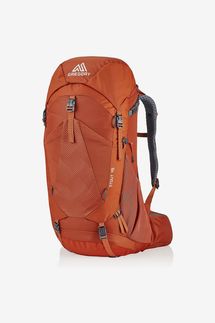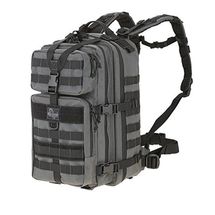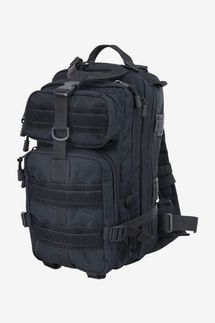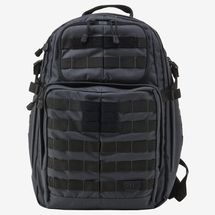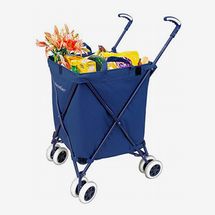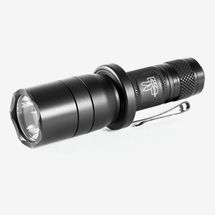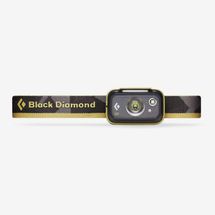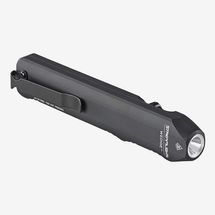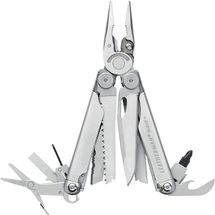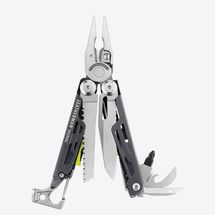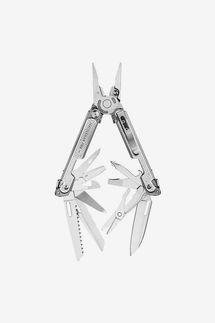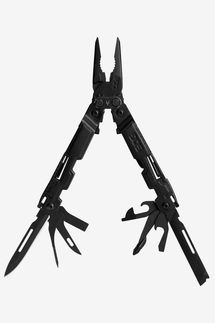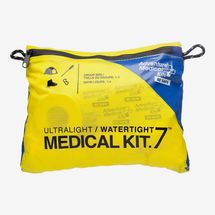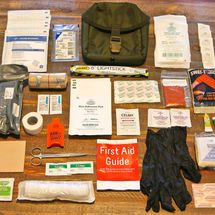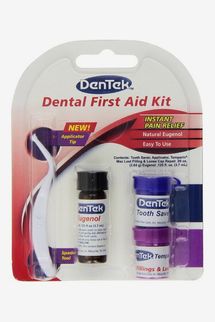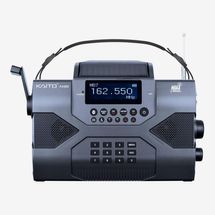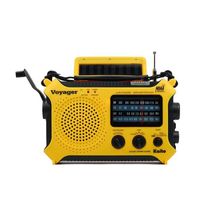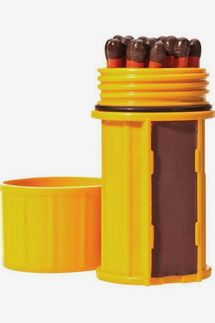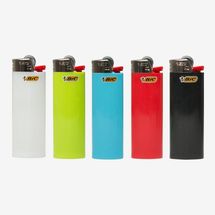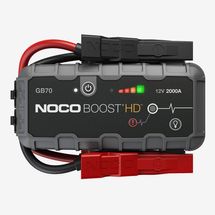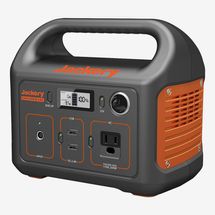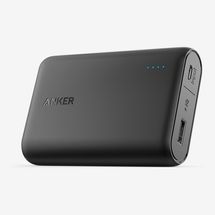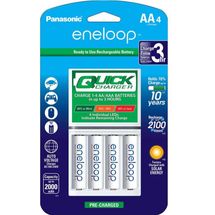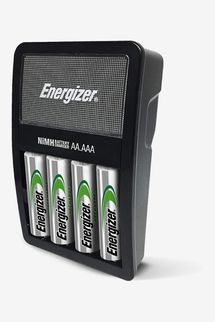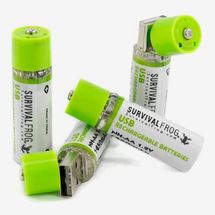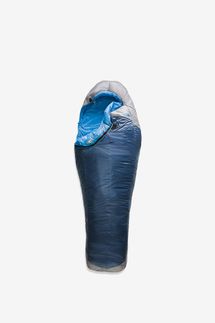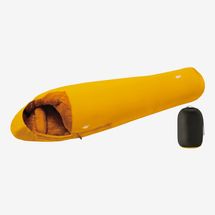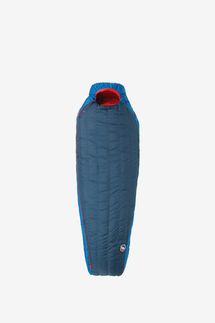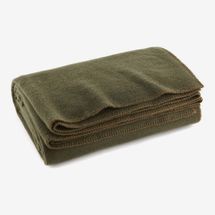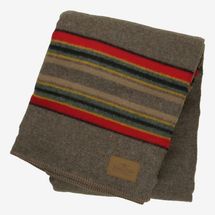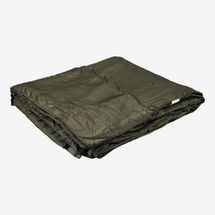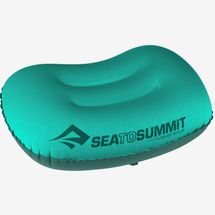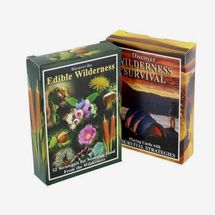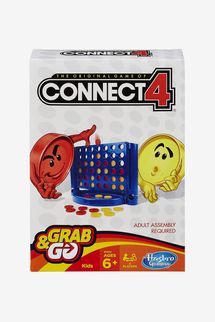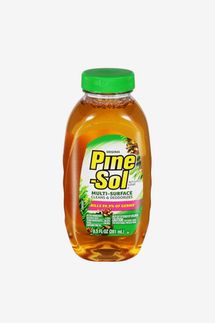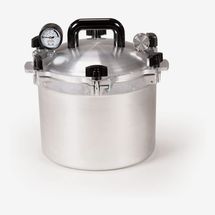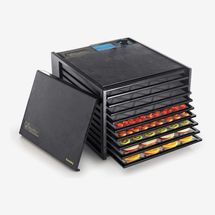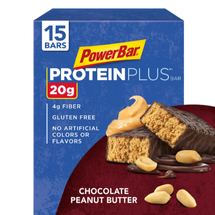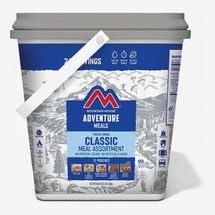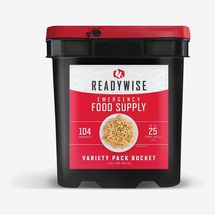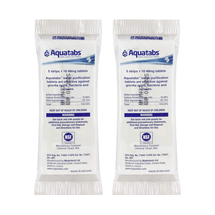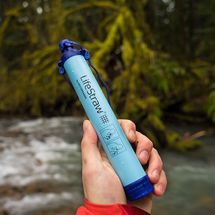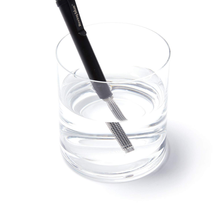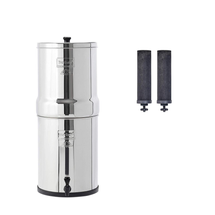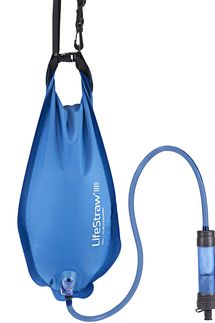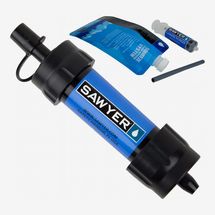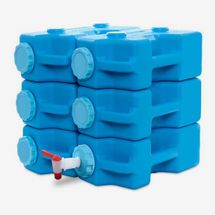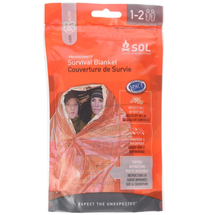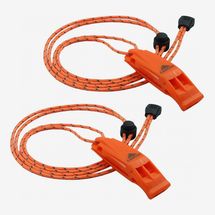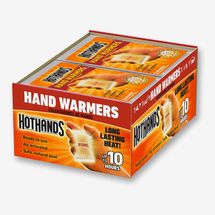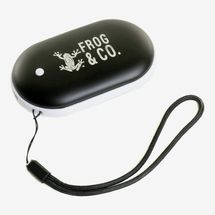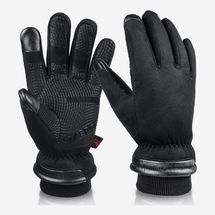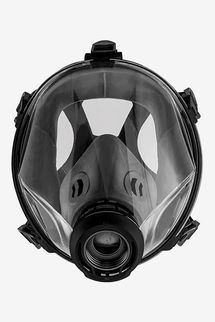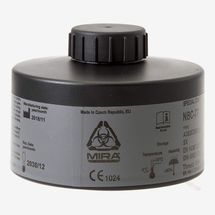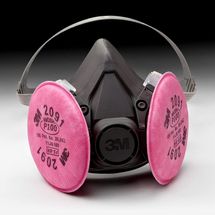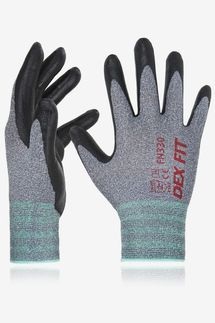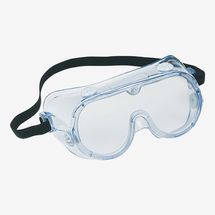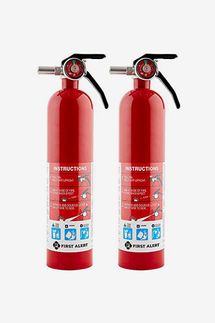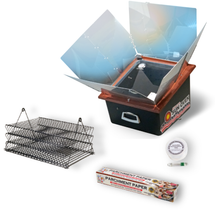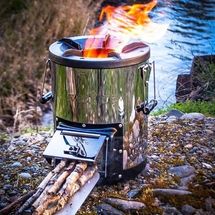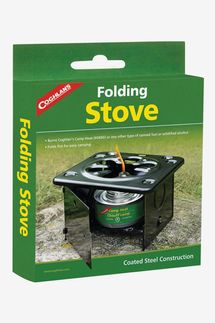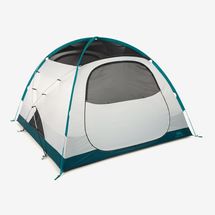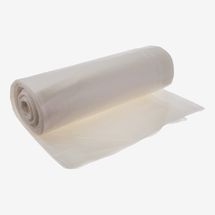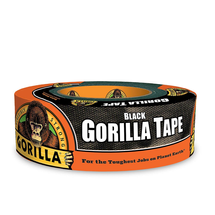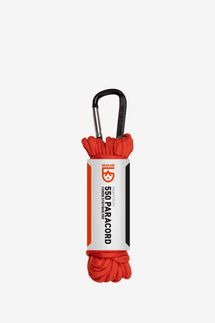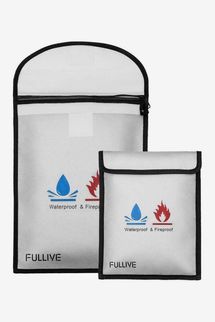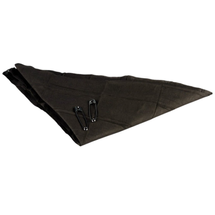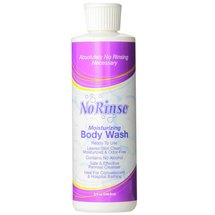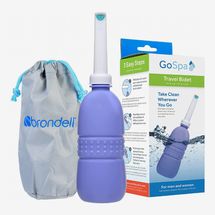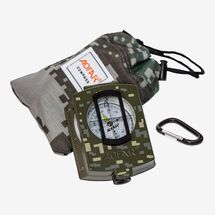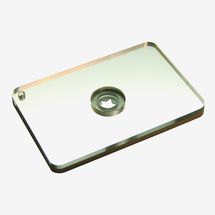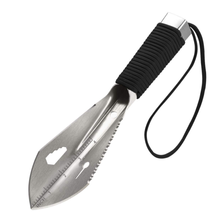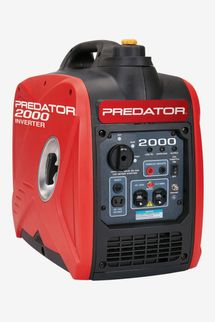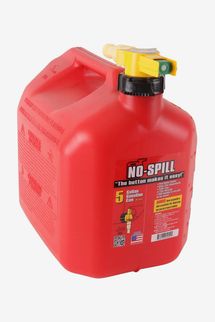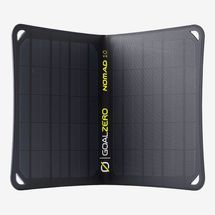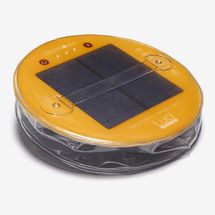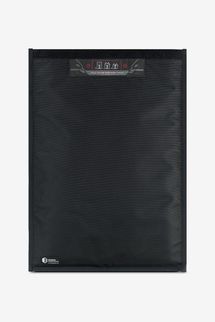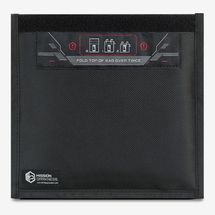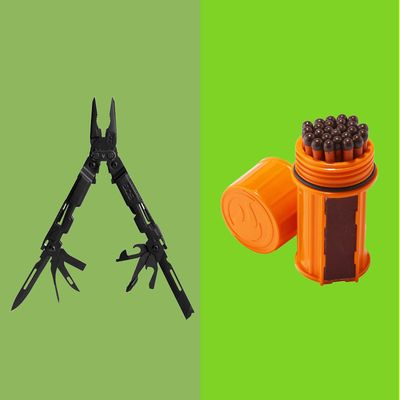
Compiling a stash of emergency-preparedness items used to be a task many of us kept on the back burner — something we knew was important and we’d get to eventually. But eventually, we now know, might be closer than anyone thought. And while we’re not suggesting you start digging out an underground bunker and filling it with instant noodles, in the past few years we’ve come to learn that having a few things on hand before you need them will only help you, even if it’s just mentally.
Most preppers, like Oregon’s Afrovivalist, Sharon Ross, equate preparation with peace of mind. “Once a person is prepared during a disaster,” she says, “they don’t feel the sense of urgency to go shopping for supplies.” So if visions of empty store shelves still haunt you, have a nice, calm look at our well-organized, detailed list of emergency supplies to keep on hand. To assemble it, we consulted recommendations from the CDC, Red Cross, the Department of Homeland Security, and the NYC Emergency Management Department. But those agencies give you only general categories, and we wanted specifics. So we interviewed 22 survivalists, preppers, bushcrafters, homesteaders, and emergency professionals about their favorite things to always have on-hand — and their advice to make your bugout (or bugin) the best it can possibly be.
Here are their suggestions, broken down into categories based on your level of survivalist instinct. There’s a lot to sift through here, but you can pick and mix products according to your needs. For many, a leaner survival kit makes more sense than a military-grade one. “Simplicity is key when prepping,” says Prepper Press founder Derrick James. Especially as, in a worst-case scenario, you might have to haul all of this gear a considerable distance. “It’s really important for people to know what their limitations are,” says emergency preparedness expert Aton Edwards, author of the upcoming book Afroprep Now!. “Don’t prove how strong you are by dragging around a 40-pound bag. Rage lift in the gym, don’t rage lift your bag.” And in any potential urban or wilderness survival situation, advises Steve Lancia of North Camp Survival School in the Hudson Valley, there’s one piece of gear you should always keep around: “A cool head.”
The Basics
Backpack
Most preppers keep two bags: a three-day bag and a two-week bag. While you needn’t get too hung up on that, it’s not a terrible idea to have something that you can easily grab that has everything you need in it in case you have to leave quickly. Bushcrafter Mark Christensen recommends a “quality rucksack, or even a five-gallon bucket, which keeps your emergency gear together.” Survivalist E.J. “Skullcrusher” Snyder (whom you might know from his many appearances on Naked and Afraid) likes the “tough and roomy” bags by Gregory, but if you prefer something more tactical, he suggests something by Maxpedition. Jim Cobb, editor-in-chief of Prepper Survival Guide and Backwoods Survival Guide magazines, likes the RUSH24 bag from 5.11 Tactical, saying that it’s “robust without being ridiculously huge.” And Lisa Bedford, a.k.a. the Survival Mom, loves the Presidio Tactical Assault Backpack from Flying Circle, because it’s “a very good size for teens and most women.”
Edwards suggests an alternative to traditional rucksacks: the humble folding shopping cart. “If you aren’t physically fit, then lugging around a fully stocked go-bag can be difficult,” he explains. “So a folding cart will let you move around from one shelter to another shelter.”
Flashlight
Survivalist Travis McGill, along with Thomas Coyne, the owner and lead instructor at Thomas Coyne Survival Schools, and a survivalist who asked that we refer to him by the pseudonym “RC” like Surefire flashlights because they’re virtually indestructible. They’re so durable, in fact, that some are specially designed to be used as a self-defense weapon, Coyne says. McGill uses the Surefire D3ft but admits “it’s totally overkill” and says you could also “get something that takes AA or AAA batteries since they’re easy to find and replace.” Even a small one for your keychain will do, says Mykel Hawke, a former U.S. Army special forces captain and author of several survival books. “But make sure it has a turn on button, not just squeeze on, for when you need to have light to work and be hands free,” he says. Cobb, Edwards, Snyder and Morgan Rogue of the prepper site Rogue Preparedness, however, prefer headlamps to flashlights so you can be 100 percent hands-free and there’s less chance you’ll put your torch down and lose it. Rogue likes Foxelli or Petzl, while Snyder uses a Black Diamond Spot 325. Cobb also pointed us toward Streamlight’s products, which “work very well and will take a beating.”
Multi-tool
There was plenty of consensus here, too. Unsurprisingly, everyone likes a Leatherman, a brand that also came out strong on our list of the best multi-tools. “I am a big fan,” Snyder says. “There are many types to choose from to meet your needs and budget.” Photographer James Barkman “swears by” his Leatherman Free P4, which can do everything from skin a deer to mend tents and other survival gear. Coyne likes the Supertool 300. And John Ramey of the prepper site theprepared.com likes the Leatherman Wave+ because it “doesn’t waste space and weight on tools that don’t matter much in an emergency, but it’s versatile and robust enough to be a core survival item.” The Signal, which McGill uses, also includes a fire starter and a whistle. If your survival budget doesn’t stretch to Leatherman, Lancia pointed us to the more affordable knife brand SOG, which designs similarly compact multi-tools for half the price.
First-Aid Kit
For most preppers, recommending a first-aid kit off the shelf would be like Julia Child telling you her favorite flavor of Pop-Tart. They like to put them together themselves so they can pack them with, as Hawke puts it, “some dressings for real trauma,” including tourniquets, Israeli Bandages, and, in R.C.’s case, zip-tie restraints, though he wouldn’t really say what those were for. That said, Coyne calls Adventure Medical Kits “the best first-aid kits on the market [and] definitely the closest commercially available to what I would customize for myself.” Survival Mom has a different preference, saying, “it would be hard to find better medical kits than those sold by Dr. Joe and Amy Alton at Doom & Bloom.” Their company offers a variety of kits that cover everything from labor to gunshot wounds. Whatever first aid kid you decide on, Mike Glover, crisis management and response expert and host of the popular FieldCraft Survival podcast, recommends you always maintain a 30-day supply of over-the-counter medicine (like painkillers, cold, allergy, anti-diarrheal medications) as well as any prescription medications. And another consideration, via Edwards: “There should be stuff for dental emergencies as well. Any kind of emergency that forces you to evacuate, especially in the city, you’re not going to be able to find a dentist.”
Hand-Crank Radio
Most of our experts recommended Kaito shortwave radios. Coyne’s favorite is the Kaito Voyager because it’s rugged and water-resistant, has plug-in and solar charging capabilities, and is shortwave, which means it picks up broadcasts from around the world. “In an extreme global situation, an entire country may be off-grid, but someone, somewhere, will be broadcasting,” Hawke says. Edwards agrees that a hand-crank radio is vital: “You don’t know if the internet and cellular networks are going to work.” Snyder likes the Kaito KA500 Emergency Radio. “It’s capable of being charged via hand crank, solar panel, micro USB, a standard wall outlet, or batteries,” he says. “And it has a five-LED reading lamp, an LED flashlight, and a red LED SOS beacon light.”
Matches
Waterproof matches are the best matches, though our experts say lighters are better than matches. Rogue recommends carrying both, in case either fails. Edwards, Cobb, and Hawke like Bic lighters, but Hawke stresses that “folks should review fire basics [because] it’s surprising how many people don’t know how to build a fire once they have a light.” Coyne uses only UCO Stormproof matches. “Once lit, they cannot be put out,” he says. “They even burn underwater.”
Power Bank
Hawke, Coyne, and R.C. all recommend power banks (which can be used to charge phones and other devices) that can be charged by multiple sources, including the sun. While Coyne personally uses a (now sold-out) Kodiak brand power bank because it’s rugged, water resistant, and has an emergency light, he recommends several reliable options that will also jump start your car, and are extremely small, such as the NOCO Boost. (Coyne also likes OtterBox’s charging cables because they’re “super strong” and “won’t rip or tear easily.”) Ross likes the Jackery Power Station — which has dual USB ports, an AC outlet, and a car port — and calls it “awesome!”
Ramey is the one naysayer when it comes to devices that use solar panels. He prefers to avoid them, because “you don’t want your battery baking in the sun,” he says. After “deep field testing,” he recommends the Anker PowerCore 10,000mAh. He calls it “the right mix of ruggedness, size and weight, capacity, and performance.” Rogue also likes “anything by Anker” to “charge your phone or other devices perfectly.”
Batteries
Coyne uses only Energizer, and Ramey won’t budge from his Panasonic Eneloops “because they last a long time sitting on a shelf,” and Survival Mom loves the ones from Survival Frog (no relation). One thing all of our experts agree on is that whatever batteries you get, they should be rechargeable.
Sleeping Bag
R.C. likes anything from The North Face. Coyne prefers the Montbell brand. Unlike mummy-style bags, which taper toward the bottom like mummy wrappings, Montbells stretch and are “next-level comfortable,” he says. Snyder likes the Big Agnes Anvil Horn 15 because it’s made of lightweight down. Hawke recommends a slightly more austere (and multipurpose) solution: “a large trash bag, like 55-gallon type, can serve as great sleeping bag, shelter, rucksack, float, etc.”
Warm Blanket
No big surprise here: Everyone likes wool. Get “a good, old-fashioned wool blanket,” says Snyder, because it’s “tough, breathes well, and keeps you warm, even if it gets wet.” He suggests an Army–issued wool blanket from a military surplus store. RC loves Pendelton, and Coyne likes the Jungle Blanket by Snugpak. He calls it “a next-level woobie” (military slang for blanket) because it’s “warm, compressible, and water resistant.” If you have any extras around and are stuck at home without heat, Survival Mom also recommends covering the windows of your smallest room with blankets to stay warm.
Pillow
Edwards says you shouldn’t underestimate the power of a good night’s sleep in a stressful situation. Alongside a good blanket, “what’s nice to have is an inflatable hiking pillow,” he explains. “One of the most important things you need to do in a crisis is get sleep, because your body gets worn down because of the stress it’s under.”
Cards and Games
A surprising number of emergency checklists suggest bringing a puzzle to give yourself something fun to do. But “forget the puzzle,” Coyne says. “A deck of cards is best.” Hawke agrees, preferring cards for their small size, portability, and the numerous games that can be played with them. Also, as they both point out, you can get cards with survival info on the back, turning your diversion into a mini cheat sheet. And don’t forget to bring toys for your kids, Edwards says, “because they’re going to be frightened.” Cobb suggests a family-friendly board game that will keep everyone distracted and entertained during power outages: “Having a couple of fun board games or something similar will go a long way to keeping everyone busy and their minds off the crisis at hand for a bit.”
Cleaning Agent
Bleach isn’t the only cleaner that will do the job. Snyder says cleaners like Lysol and Pine-Sol also work to keep things “germ free so that everyone stays healthy and doesn’t get sick.” But if you like bleach, any unscented, unadulterated bleach is fine. “Just get some bleach,” R.C. says.
Food
Now hear us out: It might sound extreme, but at some point, you’ll probably wish you had some food. Our experts all approach the food question a little differently. Homesteader Lisa Sutton and the popular YouTuber, Prepper Potpourri (both Michiganers, both grandmothers), are big fans of canning and dehydrating. These processes take a little know-how, but are ultimately very practical and sustainable, especially if you grow your own food. They both like the All American Canner and the Excalibur Dehydrator. If you’re not ready to make your own food, our experts recommend stocking your pantry with, ideally, two-weeks’ worth of non-perishable foods like canned and dried goods, and peanut butter. “Think of very very simple meals, like oatmeal, [and] meals where you can open up a can of soup or chili and pour it over the rice and have more calories and more servings,” says Survival Mom, who goes into more detail about this in her book. And make sure you get stuff you actually like: “Don’t stock up on beans and rice if you don’t eat beans and rice,” Sutton says. Cobb’s in agreement: “Store what you eat and eat what you store. Don’t go out and buy cases of special ‘survival food’ if that’s not what you’re eating normally — a disaster or emergency is the last place you want to add stomach upset to the mix.”
If you want more variety and are thinking of supplementing your stock with freeze-dried food, Survival Mom, Prepper Potpourri, and David at Preppers Survive like Mountainhouse. Sutton recommends products from Thrive Life, “because they are real food, not prepackaged, high carb, high sodium emergency foods” like typical emergency foods tend to be. Hawke likes MRE’s (which aren’t technically freeze dried and which civilians can now buy), Power Bars, beef jerky, and meals from a company called Wise Foods, whose empty containers, he suggests, can be used as toilets. And don’t forget condiments, he says. R.C. recommends any junk food since it’s “full of sugar and preservatives and is good for survival,” if nothing else. Rogue suggests “morale-boosting foods” like macaroni and cheese, packaged cookies, raisins, dehydrated fruits, popcorn, and chocolate. And Edwards points us toward “high-protein stuff that’s not very heavy” like energy bars and trail mix. “Because when you’re in a crisis situation, you are going to burn more energy than you normally expend.”
Water
Jessica Kellog of the City of Los Angeles Emergency Management Department recommends having one gallon of water per person per day for seven days, but R.C. suggests getting even more: “You can’t have too much water,” he says. “If disaster strikes, the first thing I would do is fill the bathtub or the sink with water to keep it as a reserve.” As Edwards points out, “any kind of emergency where you have to evacuate your home, especially in a city, would probably classify as something that would disrupt water treatment.” If you’re sticking to bottled, any kind will do. But once that’s gone, you need to have a way to resupply, says Hawke. There are many ways to purify water. The easiest ways are by boiling (you’ll need something metal in which to do that), with water purification tablets (Coyne likes these), and through various filtration systems. Hawke likes the Life Straw and the O-Zone Pen for individual use, and Rogue, Prepper Potpourri, and Survival Mom like a Berkey for something bigger. David likes LifeStraw’s one-gallon gravity bag that removes lead, parasites, bacteria, and chemicals. It can also be used as a straw alone, with a plastic bottle, or with in-line hydration bladders. If you need a smaller option, Survival Mom uses and recommends the Sawyer Mini. Edwards agrees that the Sawyer is “a really good filter, that’s one of the easiest and smallest to use.”
Water storage
Even if you have the ability to filter water on the go, Edwards says that in an emergency, “you’ll want to be carrying as many containers as you can.” James says that these Aquabricks are “the best semi-portable water storage containers” he’s seen. “They’re strong, very stackable, and come with an optional water-filtration system.”
Slightly More Intense Essentials
Emergency Blanket
The consensus seems to be for Heatsheets, which our experts say are the strongest and lightest options available. “There are more lightweight ones, but they rip easily,” says Coyne. McGill suggests getting this option, which is sized for two, making it easier to stay covered.
Whistle
“Just get the loudest,” says Coyne, who also recommends whistles “without moving parts,” like this one.
Hand Warmers
Rogue says that hand warmers like these are a godsend, and Survival Mom likes this rechargeable, handheld option from Frog & Co. Or, for a more long-term solution, James suggests simply investing in “a decent pair of warm gloves.”
Masks
“When thinking of an emergency that would force New Yorkers to evacuate — like an earthquake — masks are important because there would be an enormous amount of particulate in the air, infused with toxic materials,” says Edwards. He, Coyne and Rogue suggest N-95 masks, which paramedics use to protect themselves from pathogens. Ross, on the other hand, suggests you go for a reusable P-100 respirator, which offers the highest protection possible, blocking out 99.9 percent of contaminants, compared to an N-95, which filters out just 95 percent of particles and isn’t oil-resistant. Lancia says it isn’t so paranoid to buy a full-face mask (“The more I watch the news, the more I’m convinced that we all need a high-quality gas mask and CBRN filter to go with it. Mira Safety makes some of the best.”) But, as Christensen points out, “even a wet rag held over your mouth and nose helps a lot.” For extra preparedness points: “I would also have goggles to protect my eyes,” says Edwards. “And I’d have work gloves in there, because in the case of an earthquake, you’re moving debris.”
Fire Extinguisher
There are four different classes of fire extinguishers for four different kinds of fires — ordinary combustibles, grease, electrical, and metal — and our guess is you’d rather not get them all. (For example, R.C. likes a sleek Blaze Defense Fire Suppression Device, but it’s not for use on electrical fires.) Your best bet is a standard home model, which is versatile and inexpensive.
Alternative cooking vessels
“Every household needs at least one alternative way to warm and cook food and heat water, and a solar cooker doesn’t require storing any type of fuel, which is a huge advantage,” says Survival Mom, who recommends the Sun Oven, (which dehydrates, too). She also likes rocket stoves, “highly efficient stoves that require only tiny amounts of biofuel,” and suggests this one from Silver Fire. David prefers Coughlin’s steel-coated canned-heat stove, which is sturdy enough for heavy pots and has covered sides that block wind. It’s compatible with any canned fuel and folds flat when not in use.
A tent
Should you find yourself at home without heat, “seal off one room that has the fewest number of windows or anything that’s gonna allow cold air to come in, and put up a tent in that room,” says Survival Mom. A cold-weather tent like this one is a good choice, she says, since it’s both warm and small enough to fit in a small room.
Plastic Sheeting
“Plastic sheeting, or even a nice tarp, can have many uses: from collecting rain water to drink, to [making] a traveling shelter if you don’t have a tent [and] sealing off areas to keep out germs or bad air from coming in,” Snyder says. Edwards also recommends tarps as a tent alternative: “A tarp can provide a barrier from the ground, or become a shelter — tents can be a little expensive, and tarps are tougher.”
Duct Tape and Paracord
Snyder calls duct tape “a survivalist’s best friend” that he’s seen used for “everything from making cups to helping stabilize a broken limb to patching leaks.” He and Coyne both like Gorilla tape. Alongside duct tape, Edwards says you can “never have too much line” for tying things down, and recommends carrying a fair few feet of versatile paracord. Cobb agrees, saying that paracord is “the traditional cordage for preppers.”
A Plan
Everyone recommends you have a plan, preferably written out, and, if not rehearsed, at least talked about and memorized by everyone in your family. “Because in those moments when you’re frozen in indecision, and you panic, you’re starting to make really bad decisions,” says Survival Mom, who explains that “what you put into place beforehand is going to help you make the best decisions in those very intense moments.” “To implement the plan,” says Kellog, “survival supplies should be stored in accessible places that are known to members within the household,” And you should know how and when to use all the items you’ve gathered and test all your gear. And be sure to store important documents, photos and other items all in one place. Rogue likes the Fullive fireproof and waterproof bag for this purpose. Edwards adds that when on the move, you’ll want to keep those passports and birth certificates close to your person, rather than in a separate bug-out bag.
Triangular Bandages
Hawke loves these and has found over thirty uses for them, examples of which are here and here.
Personal Hygiene Products
Glover recommends that “people carry a stockpile of personal hygiene items in the event infrastructure and supply chains are adversely affected.” Both Rogue and David like alcohol-free No-Rinse Body Wash. And rather than carrying a stockpile of toilet paper, Edwards suggests packing a travel bidet, which will take up less space and be “a lot more sanitary.” In general, he says, “don’t short yourself” on these kinds of comfort items. “Because you want to be able to maintain your sanity. These are the little things that keep you sane.”
Signals and Maps
Have a compass and a mirror (Coyne likes this one, below), and designate FEMA locations and evacuation routes on your map.
Reference material
Ross recommends you educate yourself about what you can and can’t eat out in the wild and suggests you get a book on the subject.
A Shovel
“For waste disposal,” Kellog says.
Generator
McGill suggests getting a 2000W generator like this one to keep in the garage in suburban areas so you can keep your refrigerator on and charge your phones in case of power outages.
Gas
McGill also suggests keeping five gallons of gas in your garage. “To keep it from going bad, you can fill your car up with it once a month and take the tank to get refilled with fresh fuel at the gas station.”
Solar Panel
Rogue swears by a folding portable solar panel “that you can open up and place within sunlight to charge your devices directly from the panel,” she says. “They come with USB plugs, so phones and other devices plug right in. You can do it outside or through a sunny window.” Goal Zero panels have never failed her, “and they’ll even work with some overcast, which is rare with the smaller solar panels.”
Solar light
Survival Mom recommends having a solar light and likes this one because “it’s collapsible, so it can be tucked into a backpack, glove box, or any other small area.”
EMP Protection
If you’re worried about the possibility of a nuclear electromagnetic pulse event — the likes of which could potentially short-circuit your personal electronic equipment, and came up in conversation with many of the preppers we talked to — then James suggests investing in Faraday protection for your all-important phone and laptop.
Additional reporting by Stacey Dee Woods
The Strategist is designed to surface the most useful, expert recommendations for things to buy across the vast e-commerce landscape. Some of our latest conquests include the best acne treatments, rolling luggage, pillows for side sleepers, natural anxiety remedies, and bath towels. We update links when possible, but note that deals can expire and all prices are subject to change.

